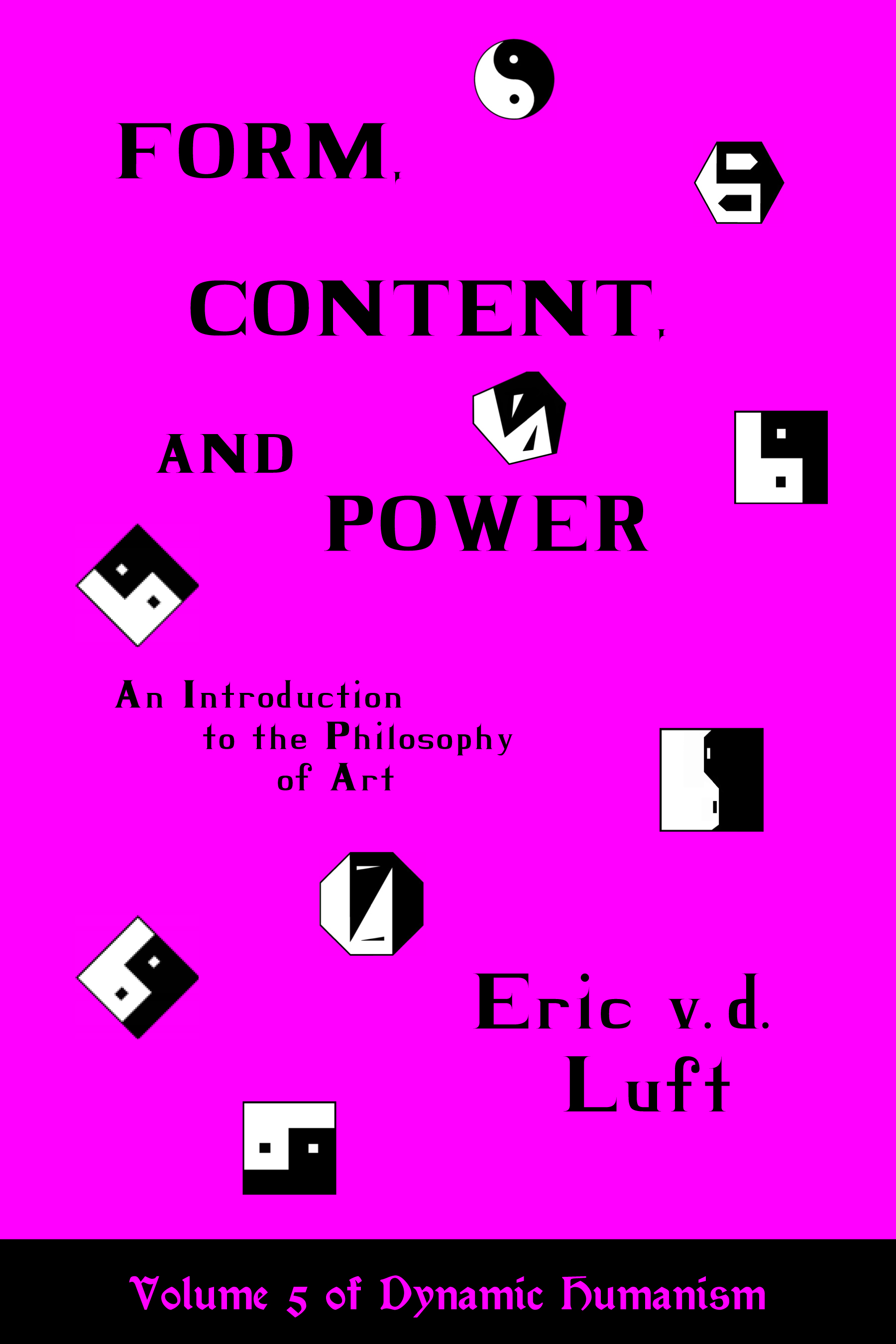
ISBN 978-0-9655179-6-6 (Kindle e-book), $4.99
ISBN 978-1-933237-71-8 (EPUB e-book), $4.99
ISBN 978-1-62130-706-8 (PDF e-book), $4.95
|
Form, Content, and Power:
An Introduction to the
Philosophy of Art
by Eric v.d. Luft
This book is meant to be disconcerting. It asks
many more questions than it answers, but perhaps
that is how philosophy should be, especially if the
questions posed are capable of rousing interest
in a topic and stimulating individual thought. It
challenges, sometimes attacks, and even ridicules,
various traditions and theoretical positions in the
history of the philosophy of art, not for merely
destructive or polemical purposes, but rather to
encourage insightful readers to proceed beyond
these positions in their own minds. Its arguments
are not didactic and its conclusions are not dogmatic,
but evocative and provisional, in the hope that its
readers will confront them with a vigor at least equal
to that with which these arguments and conclusions
have already confronted the traditional opinions.
Its general aims are (1) to try to answer the basic
questions: "What is art?" and "What is good art?"
and (2) to try to develop a unified theory of art, i.e.,
a theory which would embrace and be equally
applicable to all types and media of art, from
architecture to rock songs, from symphonies to
sculpture, from Shakespeare to street graffiti.
Toward this second aim, it examines the traditional
concept of beauty and finds it incoherent, undefinable,
philosophically unsatisfactory, and incapable of serving
as the ground of any rigorous unified theory of art,
because it cannot, without equivocation, be made
equally applicable to all sorts of art. Thus, instead of
beauty, it proposes the concept of power, which can
be clearly and precisely defined and which is not only
universally and univocally applicable, but also rich
enough as a concept to be able to shed light on the
whole idea of art.
It is not a difficult book. It is written for people at
all levels of erudition from college frosh to tenured
professors. It does not aim primarily toward any level,
and tries not to pander, but presents interpretations
within the philosophy of art which should be both
sufficiently original to provide grist for the professors'
speculative mills and at the same time sufficiently
lucid for beginning students to be able to grasp the
main ideas. In short, the book aims to become both
a course textbook and a work which will be discussed
at scholarly conferences and written about in journal
articles. At least with regard to this twofold aim, to be
simultaneously intelligible to tyros and interesting to
experts, and its consequent claim to a broad audience,
it is akin to such works as John Dewey's Art as
Experience, Robin Collingwood's The Principles
of Art, or Susanne Langer's Philosophy in a New Key.
|






|

